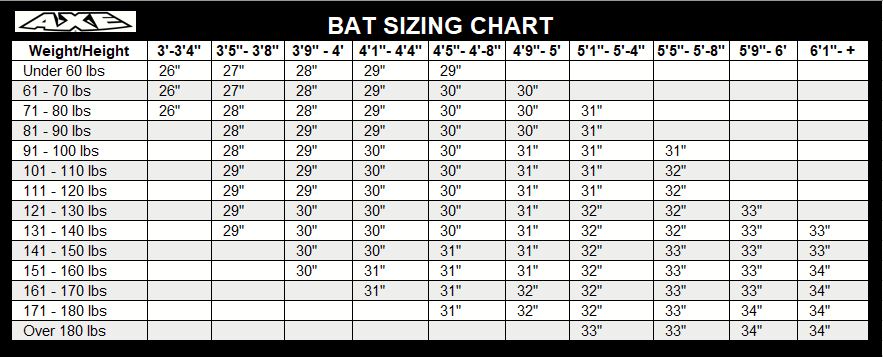
Choosing the wrong-size bat is an easy thing to do. In fact, it's one of the most common mistakes made by youth players and their parents.
Options are plentiful, and can be overwhelming, especially for those new to the game. Rusty Trudeau, a longtime high school baseball coach, now managing national baseball and softball accounts here at Axe Bat, said he sees it happen every year.
“Most all of them,” he said, when asked how many new players pick a bat that’s either too big or too small. “Unfortunately, most young players have no idea and if it’s the parents who are asking, they usually don’t know either.”
With the season approaching, we sat down with Trudeau to get some tips on how to avoid this mistake and find the bat size that’s right for you or your child.
Trudeau said one of the first things to do is to understand your body type and be realistic about your abilities.
“A lot of times, a kid will end up swinging a bat that’s too heavy because his buddy sitting next to him in the dugout — who is the same size — swings a bigger bat and just hit a home run with it,” Trudeau said. “All of a sudden, now he’ll feel like he could hit a home run if he went to a heavier bat.”
Each player, like every swing, is a little bit different. With that in mind, the most reliable and easiest place to start in determining bat length, according to Trudeau, is to place the knob of the bat in the center of your chest and extend it along the length of your outstretched arm, as shown below.
“The bat should come somewhere out to the middle of the fingers,” he said. “You should be able to just curl your last knuckles right to the end cap of the bat.”

If you’re between lengths and don’t know which to choose, it’s usually best to pick the shorter (and lighter) bat for better bat speed and control, Trudeau said.
“More often than not, a kid that’s swinging a bat that’s too heavy creates more bad habits than good,” he said.
Age can be another general way to determine the correct bat length — i.e., the younger the player, the shorter the bat. Players commonly fall into the below categories.

Once you’ve found the correct length, finding the right weight is largely a matter of strength and what you are comfortable and capable of swinging. The bat industry dictates this to an extent. Most youth bats, for example, have “drop” weights — the difference between the length of a bat in inches and its weight in ounces — between -8 and -11. So a youth baseball bat, such as Axe Bat’s flagship Avenge L142H, with a drop weight of -10, would weigh 20 ounces at a length of 30 inches.
High school and college players are required to swing BBCOR-compliant bats with drop weights of -3. Consequently, Trudeau said younger players would be wise to decrease the length-to-weight ratio of their bats as they grow stronger in preparation. But he also cautioned not to rush that process.
“Your goal each year should be to get stronger, get more efficient and build a more consistent and repeatable swing,” he said. “As that happens, it will automatically create opportunities for you to swing a longer, heavier bat.”
Using these simple guidelines should help point you in the right direction and find the bat that's right for your swing.
